
by Lori Berson | Aug 4, 2023 | AI, artificial intelligence, Content Marketing, Marketing
Generative AI has witnessed tremendous hype in recent years, capturing the imagination of marketers worldwide. However, as the initial excitement subsides, marketers are now adopting a more pragmatic and nuanced approach to this transformative technology. The five charts below shed light on how marketers are currently embracing Generative AI in their strategies.
1. Generative AI’s Evolutionary Journey

The first chart illustrates the evolutionary journey of Generative AI in the eyes of marketers. Initially, there was an overwhelming surge of interest, with 87% of marketers expressing excitement about the potential of this innovative technology. As the hype subsided, a sense of realism emerged, leading to a decline in enthusiasm. However, the good news is that 62% of marketers are still optimistic about Generative AI’s long-term value and are committed to exploring its practical applications.
2. Challenges and Barriers

Chart two highlights the primary challenges faced by marketers in adopting Generative AI. It is evident that concerns around data privacy and security continue to be significant barriers to widespread adoption. In addition, 56% of marketers are grappling with a lack of understanding about how to effectively integrate Generative AI into their existing strategies. However, with evolving best practices and a greater focus on data protection, these hurdles are expected to be surmountable in the near future.
3. Incorporating Generative AI Into Content Creation

The third chart showcases how marketers are leveraging Generative AI in content creation. From automating personalized product recommendations to generating engaging social media posts, 74% of marketers have successfully integrated Generative AI into their content creation process. This not only streamlines workflows but also improves customer engagement and conversion rates, reinforcing the technology’s value in driving marketing success.
4. Improving Customer Experience

Chart four highlights Generative AI’s impact on customer experience. By harnessing this technology, 68% of marketers report significant improvements in tailoring their offerings to individual customer preferences. Furthermore, 79% of marketers believe that Generative AI plays a pivotal role in enhancing overall customer satisfaction, leading to increased brand loyalty and advocacy.
5. ROI and Future Investments

The final chart illustrates marketers’ perceptions of Generative AI’s return on investment (ROI) and future investment plans. 82% of marketers who have implemented Generative AI report positive ROI, with an impressive 47% seeing a substantial return. Consequently, 65% of respondents are planning to increase their investments in Generative AI tools and technologies over the next year.
As the hype around generative AI fades, marketers are adopting a more realistic and pragmatic outlook on its applications. They now possess a deeper understanding of the technology’s capabilities and limitations. Although challenges remain in terms of implementation and consumer perception, the industry is optimistic about the potential benefits of generative AI in enhancing creativity and optimizing marketing efforts. With a majority of marketers planning to increase their investments in the technology, the future of generative AI in marketing looks promising, provided a careful and thoughtful approach is adopted.
Need assistance with your content marketing? Schedule a call or email Lori Berson at lberson@BersonDeanStevens.com.
BersonDeanStevens has been a recognized brand strategy and marketing leader for over 25 years. We work in partnership with you to differentiate your brand and achieve your business goals. Client list.

by Lori Berson | Jun 23, 2023 | artificial intelligence, Content Marketing, Marketing
In the ever-evolving world of email marketing, personalization and automation are taking center stage. According to a recent report by Litmus, email marketers are prioritizing these strategies to enhance their campaigns and boost engagement. In this article, we’ll explore the positive trends that are driving the industry forward, with a focus on personalization, automation, and the tools that empower marketers to succeed.
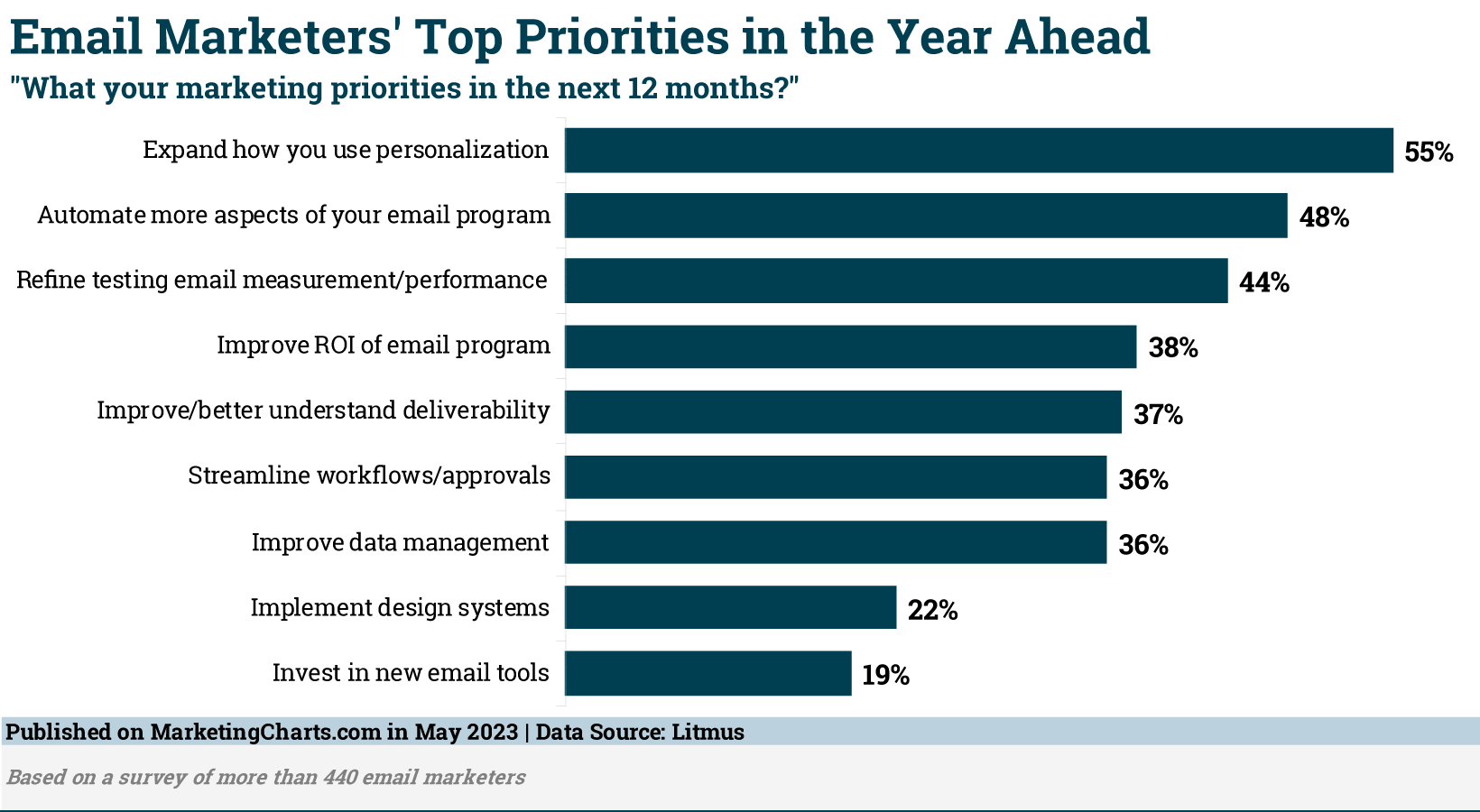
Elevating Engagement through Personalization
The power of personalization is being used to forge stronger connections with audiences. The report reveals that a majority (55%) of email marketers are prioritizing the expansion of personalization techniques, recognizing their potential to drive engagement. While personalizing subject lines may not significantly impact open rates, incorporating personalization within the body of the email has proven to yield higher click-through rates. By tailoring content to individual preferences, email marketers can create more meaningful and engaging experiences for their subscribers.
Automating for Efficiency and Effectiveness
Automation is another key focus for email marketers seeking to optimize their campaigns. Nearly half (48%) of the surveyed marketers plan to automate more aspects of their email programs. By automating tasks such as onboarding, post-purchase journeys, and customer reactivation, marketers can streamline production times and ensure consistent and timely communication with their audience. This increased efficiency allows marketers to dedicate more time to strategy and creativity, leading to improved overall results.
Addressing Key Priorities and Challenges
Beyond personalization and automation, email marketers have identified several other priorities for the year ahead. These include refining testing, measuring performance, and improving the return on investment (ROI) of their email programs. Deliverability, workflow optimization, and data management are also key areas of focus. While new email tools are not the primary investment priority, marketers recognize the need for continuous improvement and innovation in their strategies.
Survey Highlights
The report also sheds light on important insights from the surveyed email marketers. Only a quarter (24%) feel their email marketing programs are highly integrated with other channels, highlighting the potential for further integration and collaboration. Additionally, investing in the integration of email with other channels is a priority for 30% of respondents. Common bottlenecks in email production cycles include collecting feedback, content creation, and stakeholder buy-in. Interestingly, over a third of respondents admit to not measuring email ROI, suggesting an opportunity for increased data-driven decision-making. The most commonly used project management tools by the email marketers surveyed are Slack, Jira, Asana, and Trello.
The future of email marketing is bright, driven by the twin forces of personalization and automation. By leveraging these strategies effectively, marketers can enhance engagement, improve efficiency, and build lasting connections with their audiences. By staying agile and embracing innovative tools, email marketers can navigate the ever-changing landscape and continue to deliver impactful and personalized experiences that resonate with their subscribers.
To learn more, download the 2023 State of Email Workflows Report.
Need assistance with your email marketing? Schedule a call or email Lori Berson at lberson@BersonDeanStevens.com.
BersonDeanStevens has been a recognized brand strategy and marketing leader for over 25 years. We work in partnership with you to differentiate your brand and achieve your business goals. Client list.

by Lori Berson | Mar 6, 2023 | artificial intelligence, Content Marketing, Marketing
Edelman and LinkedIn recently conducted a survey of almost 3,500 management-level global business executives, which found that decision-makers are more likely to value thought leadership over traditional product-oriented marketing during an economic downturn.
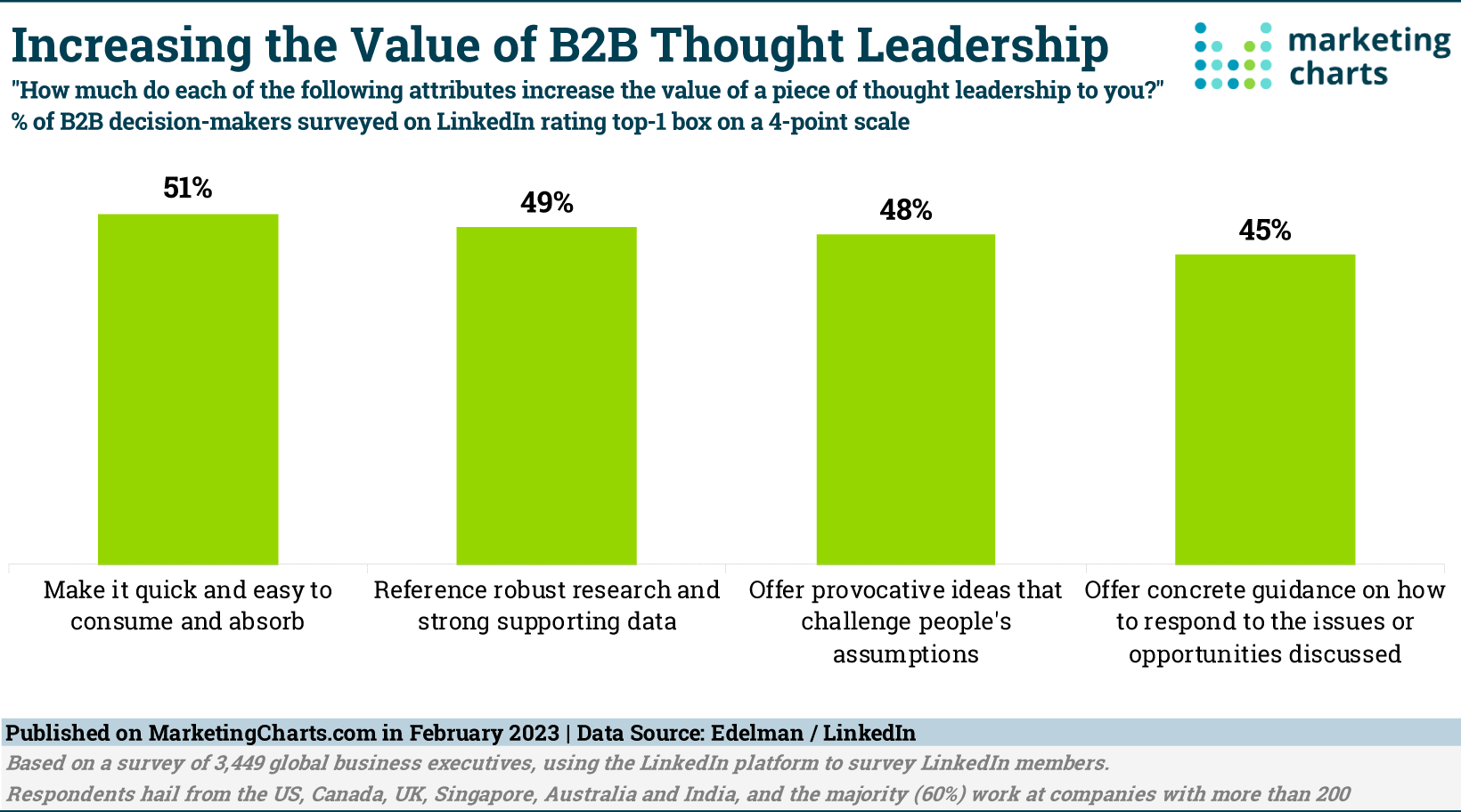
The survey revealed that 55% of decision-makers would cut products and services that they consider “nice-to-haves” rather than “must-haves” during budget cuts. However, non-critical providers can increase their chances of winning business by demonstrating that they can help a prospect increase their profit margins, minimize losses, retain customers, and win market share.
To achieve this, thought leadership can play a strong role. 61% of decision-makers believe that an organization’s thought leadership can be more effective than traditional product-oriented marketing during an economic downturn. Additionally, 55% of decision-makers believe that non-critical providers must produce high-quality thought leadership to win their business during an economic downturn.
What elements make thought leadership effective?
Decision-makers expect non-critical providers to identify new opportunities or industry trends stemming from the economic downturn, give them information and insights that will make them more effective/successful in their job, and explain how the organization can help their business do well despite the economic downturn.
To increase the value of thought leadership, decision-makers look for content that is quick and easy to consume and absorb, with 51% rating this attribute as a top-1 box score. Additionally, 49% believe that it is crucial for thought leadership to reference robust research and strong supporting data. B2B buyers have previously stated that content including research and data is crucial, and vendors can improve their content quality by incorporating more research and data.
B2B marketers need to focus on thought leadership content during an economic downturn to demonstrate their value to decision-makers. By providing quick, easy-to-consume content that references robust research and strong supporting data, marketers can increase their chances of winning business during tough economic times.
To learn more, download the study.
About the Data: The results are based on a survey of 3,449 global business executives, using the LinkedIn platform to survey LinkedIn members. Respondents hailed from the US, Canada, UK, Singapore, Australia and India, and the majority (60%) work at companies with more than 200 employees.
Need assistance with your marketing content? Schedule a call or email Lori Berson at lberson@BersonDeanStevens.com.
BersonDeanStevens has been a recognized brand strategy and marketing leader for over 25 years. We work in partnership with you to differentiate your brand and achieve your business goals. Client list.

by Lori Berson | Dec 12, 2022 | artificial intelligence, Marketing
According to the latest Salesforce State of Marketing Report, there’s sustained growth in the share of marketers around the world who have a fully defined artificial intelligence (AI) strategy, reaching 68% this year from 60% last year and 57% in 2020.
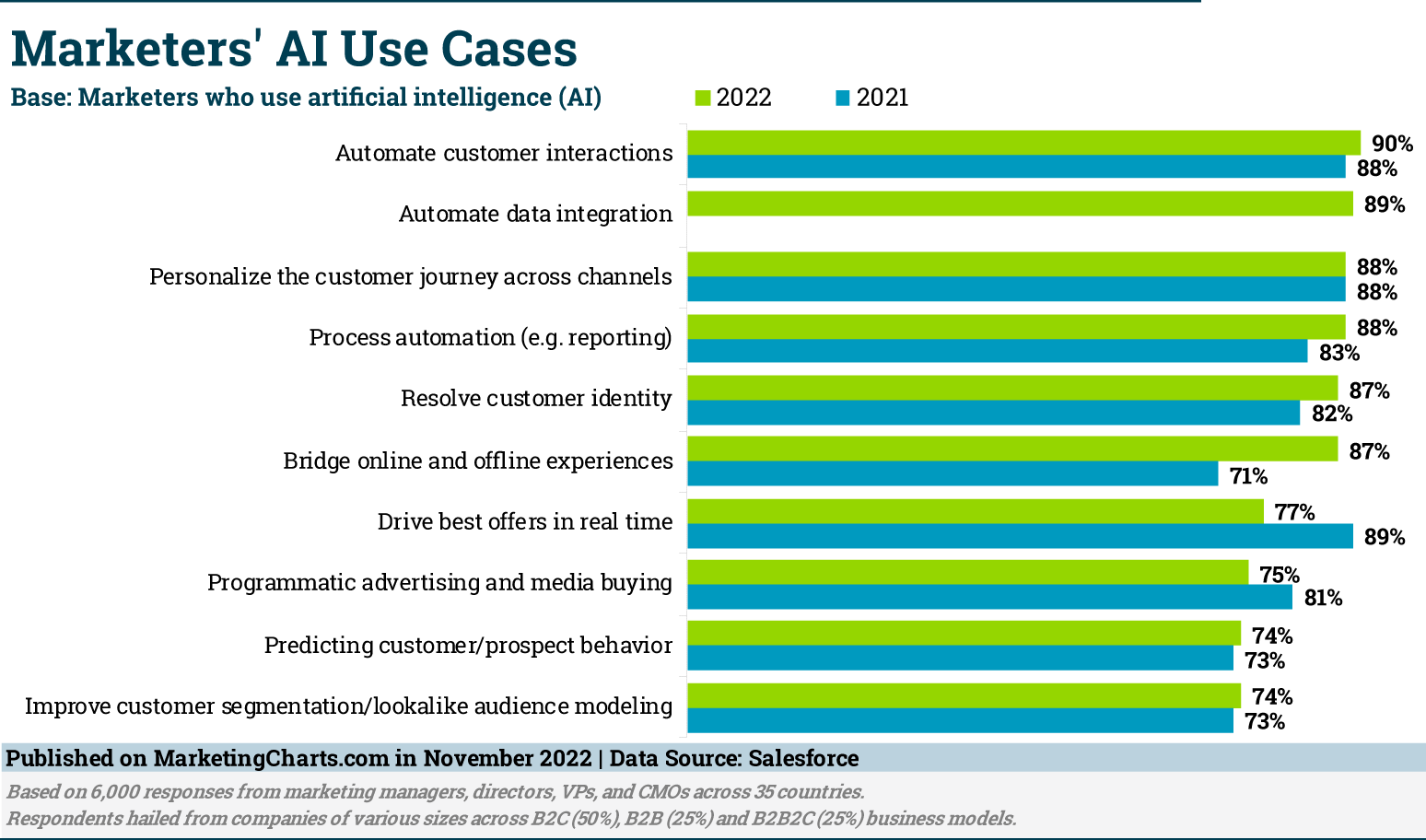
Among the marketing organizations that use AI, the most widespread use is to automate customer interactions, as reported by 90%. Some 89% use AI to automate data integration, while 88% use these applications to personalize the customer journey across channels, and an equal 88% for process automation, such as reporting. The analysts note that three of the top four AI use cases are related to automation, highlighting the importance of scaling up speed and effectiveness with existing resources.
The biggest year-over-year decline in AI usage is for driving the best offers in real-time (77% this year, down from 89% last year).
By contrast, the biggest jump this year has been in the percentage of AI users who are leveraging the technology to bridge online and offline experiences: 87% report doing so this year, up from 71% last year. This is interesting given the above findings on automation: past research has found that while automation can improve efficiencies, adding artificial intelligence (AI) can help to further improve the customer experience.
The study notes that marketers are leveraging AI to improve customer experiences, which is helpful based on marketers’ customer-centric focus. Eight in 10 respondents to Salesforce’s survey agree that customer experience is the key competitive differentiator. Despite some debate about who owns CX, marketers in this survey think that it’s their responsibility: 8 in 10 agree that their marketing organization leads customer experience initiatives across the business.
Marketers may be under pressure to make good use of AI: 88% either strongly agree (44%) or agree (44%) that marketers must continually innovate to remain competitive, and 71% also agree to some extent that meeting customer expectations is harder than it was a year ago.
Download Salesforce’s study to learn more.
About the Data: The results are based on 6,000 responses from marketing managers, directors, VPs, and CMOs across 35 countries. Respondents were from companies of various sizes across B2C (50%), B2B (25%), and B2B2C (25%) business models.
Need assistance with your marketing strategy? Schedule a call or email Lori Berson at lberson@BersonDeanStevens.com.
BersonDeanStevens has been a recognized brand strategy and marketing leader for over 25 years, including over a decade in marketing and sales automation. We work in partnership with you to differentiate your brand and achieve your business goals. Client list.
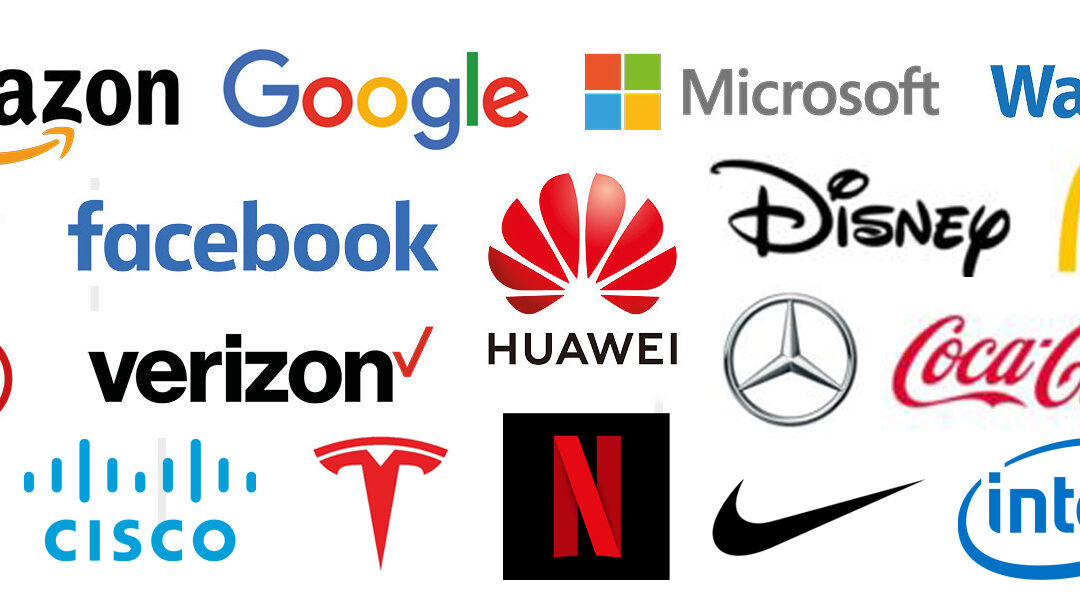
by Lori Berson | Dec 7, 2022 | Branding, Marketing
It’s no surprise that for the 10th consecutive year, Apple is the most valuable brand in the world, according to the latest annual Interbrand rankings.
This year, 9 of the top 10 brands experienced a year-over-year increase in their brand values, with Coke (#7) the exception, with a brand value that remained flat. Unlike last year, when only half of the top 10 brands had double-digit increases in brand value, this year each of those that grew (9 in total) showed increases of at least 10%.
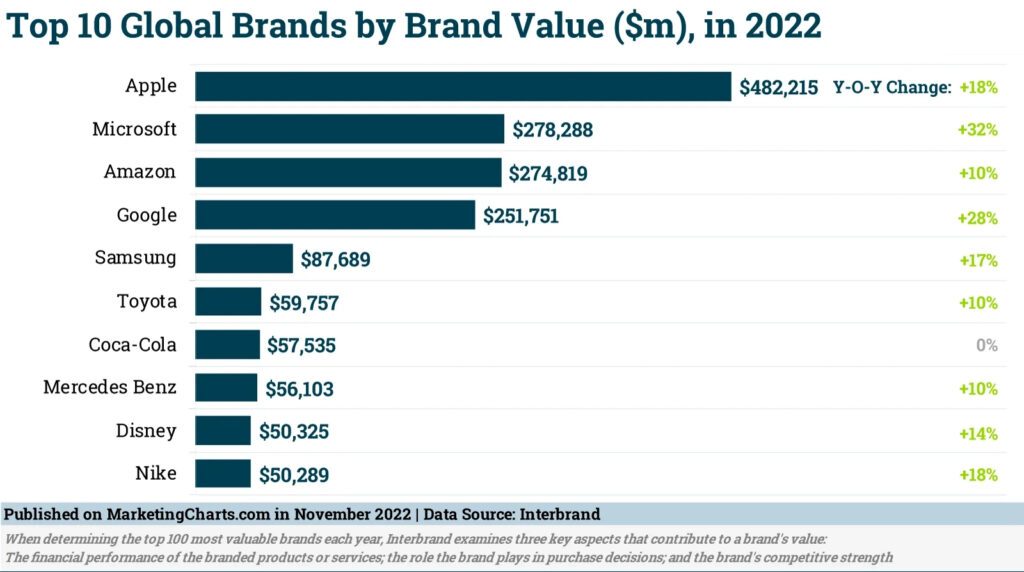
Apple’s (also the top brand in BrandZ’s rankings) brand value had an estimated value of $482 billion, up 18% from $408 billion last year. Next was Microsoft, which enjoyed the largest rise in brand value, up 32% to almost $279 billion. Microsoft jumped over Amazon, which fell to the third spot despite a 10% climb in brand value to almost $275 billion. Closing the gap with Amazon was Google, which remained in the fourth spot but which experienced a brand value rise of 28% year-over-year (to almost $252 billion), the second-fastest growth rate among the top 10.
There was then a steep drop-off to the fifth spot, held by Samsung (+17% to almost $88 billion). Each of the top five brands is a Technology brand, while the others rounding out the top 10 are from four different industries. The automotive industry is the next-most well represented in the top 10, with Toyota at sixth and Mercedes Benz staying at eighth. New to the top 10 this year was Nike, which overtook McDonald’s, which was ninth last year but fell to eleventh due to a smaller growth rate (+6%).
Overall, the top 100 brands recorded brand value growth of 16% year-over-year, the fastest rate ever recorded by Interbrand. They collectively now account for more than $3 trillion in brand value, exceeding that threshold for the first time.
Fastest-Growing and New Brands
As for the brands that saw the fastest growth in value over the past year, Microsoft was at the top with 32% growth, but it is followed closely by Tesla (+32%) and Chanel (+32%). Also following closely behind were Ferrari (+31%) and LEGO (+30%). Other fast risers this year included Google, Hermès, and Dior.
Three brands were new entrants to the top 100 this year – Airbnb, Red Bull, and Xiaomi.
For additional data and insights, download the report.
Need assistance with your branding? Schedule a call or email Lori Berson at lberson@BersonDeanStevens.com.
BersonDeanStevens has been a recognized brand strategy and marketing leader for over 25 years, including over a decade in marketing and sales automation. We work in partnership with you to differentiate your brand and achieve your business goals. Client list.

by Lori Berson | Aug 17, 2022 | Direct Mail, Marketing
According to survey results from Lob and Comperemedia, more than 7 in 10 consumers open direct mail either immediately or the same day they receive it, and 62% report having taken action after reading a direct mail piece.
And consumers most often visit a brand’s website after receiving a direct mail piece, so it’s critical to ensure every touchpoint in your campaign has consistent visuals and messaging to create an engaging customer experience optimized for conversion.
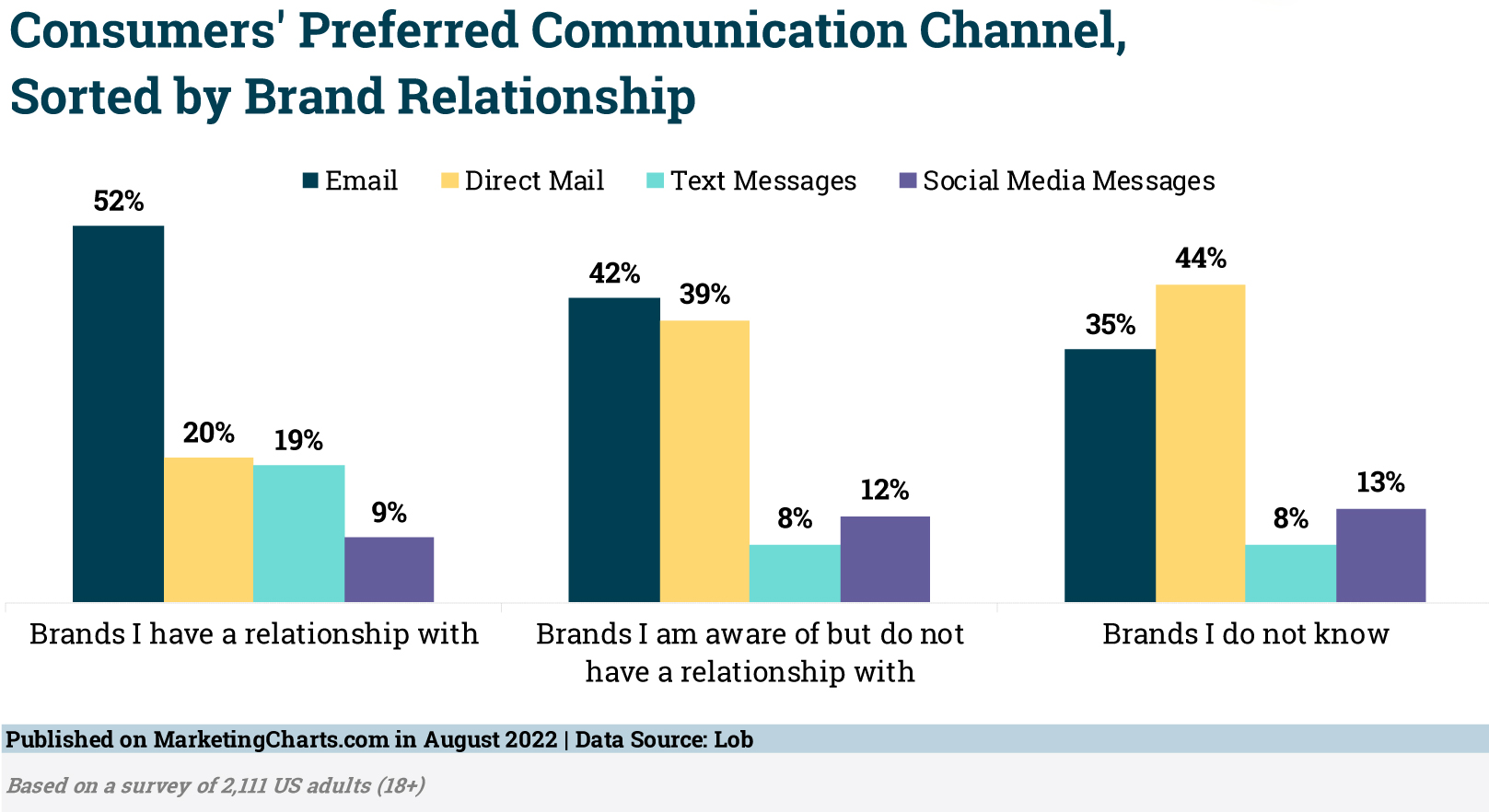
Key Findings and Insights
Direct mail is favored when customers don’t know the brand.
2,000+ US adults surveyed were given 4 channel choices (email, direct mail, text messages, and social media messages) and asked about their preferred communication from brands in different situations. For brands that respondents already have a relationship with, email was easily the preferred communication method (52%). Direct mail and text messages trailed distantly, but closely together (20% and 19%, respectively).
For brands that respondents are aware of but do not have a relationship with, the results showed email (42%) and direct mail (39%) as the preferred communication method. But for brands that respondents do not know, direct mail takes the lead (44%) ahead of email (35%), with social media messages (13%) and text messages (8%) trailing.
According to the results, direct mail can be an effective channel for customer acquisition. Indeed, consumers are receptive to direct mail, which can have lower-funnel impacts too: consumers rate it almost as highly as email for driving purchases.
Direct mail offers generate activity.
Promotions motivate action on social media and direct mail, per Lob’s report. The study finds that promotions and offers are the most important factors leading consumers to open or read a direct mail piece. 73% are likely to open or read a direct mail piece from a brand when it contains multiple offers or promotions, and 72% are likely to if it contains a single offer or promotion. Furthermore, offers and promotions are the leading reason for consumers to take action on a direct mail piece: among those who said they have taken action on direct mail, 64% said that it was because an offer or promotion caught their eye.
Although offers are the main driver, elements such as the design and copywriting as well as its personalization are important.
Catalogs and magazines are preferred.
Direct mail formats preferred from brands they know, respondents cited catalogs and magazines (53%) at the top of the list, ahead of brochures (pamphlet/booklet; 43%), letters and envelopes (39%), and postcards (33%). The study authors note that younger respondents (18-34) are considerably more likely than their older counterparts to prefer to receive letters and envelopes, while those ages 35-54 are the most likely to prefer to receive postcards.
Previous research has revealed that letter-sized envelopes sent from a prospect list have a higher ROI than those of oversized envelopes (92.2%), dimensional (92.3%), and postcards (85%) sent from a prospect list.
Need assistance with your direct mail strategy and production? Schedule a call or email Lori Berson at lberson@BersonDeanStevens.com.
BersonDeanStevens has been a recognized brand strategy and marketing leader for over 25 years, including over a decade in marketing and sales automation. We work in partnership with you to differentiate your brand and achieve your business goals. Client list.















